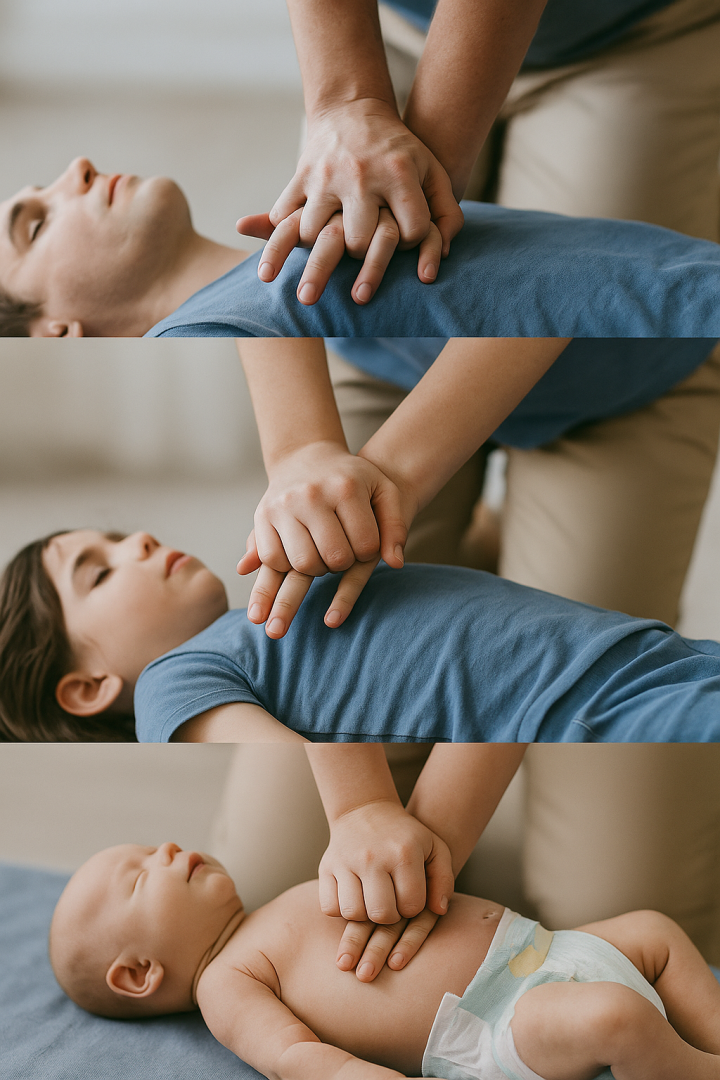Cardiopulmonary resuscitation (CPR) can save a life in moments of cardiac arrest. But did you know that the steps vary slightly depending on the age of the person receiving CPR? Here’s a clear breakdown of how to perform CPR on adults, children, and infants so you’re prepared to act confidently in an emergency.
CPR for Adults (Ages 8 and Up)
- Check Responsiveness
Tap the person and shout, “Are you okay?” - Call for Help
If unresponsive, call 911 and get an AED if available. - Check for Breathing
Look, listen, and feel for no more than 10 seconds. - Begin Chest Compressions
- Place hands in the center of the chest.
- Push hard and fast (2 inches deep, 100–120 compressions per minute).
- Allow full chest recoil.
- Rescue Breaths (If Trained)
- Give 2 breaths after every 30 compressions.
- Each breath should make the chest rise.
CPR for Children (Ages 1–8)
- Check Responsiveness and Breathing
Same as for adults. - Call 911 or Have Someone Call
If you’re alone and didn’t witness the collapse, do 2 minutes of CPR before calling. - Start Chest Compressions
- Use one or two hands based on the size of the child.
- Compress about 2 inches deep at 100–120 compressions per minute.
- Rescue Breaths (If Trained)
- 30 compressions to 2 breaths if alone.
- 15:2 ratio if two rescuers are present.
CPR for Infants (Under 1 Year)
- Check Responsiveness
Tap the bottom of the foot and shout. - Call 911 After 2 Minutes of CPR (If Alone)
Unless you saw the infant collapse. - Chest Compressions
- Use two fingers in the center of the chest, just below the nipple line.
- Compress about 1.5 inches deep at 100–120 per minute.
- Rescue Breaths (If Trained)
- Cover infant’s nose and mouth with your mouth.
- Give gentle breaths just enough to make the chest rise.
- Same compression-to-breath ratio as children.
Final Thoughts
Understanding the differences in CPR for adults, children, and infants empowers you to respond correctly during a life-threatening emergency. Whether you’re at home, work, or out in public, knowing these steps could help you save a life.


